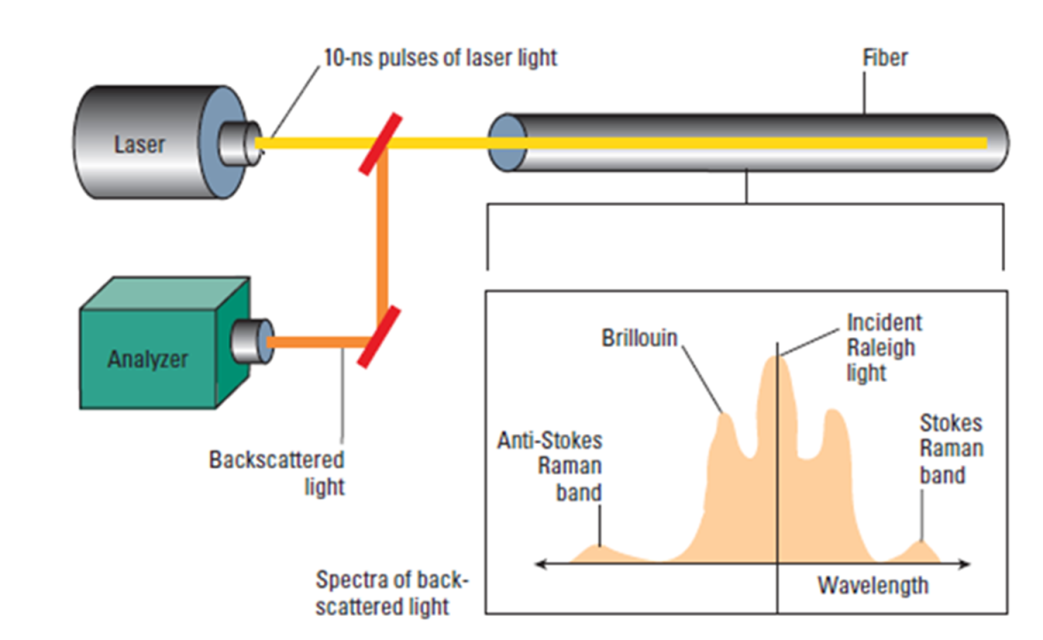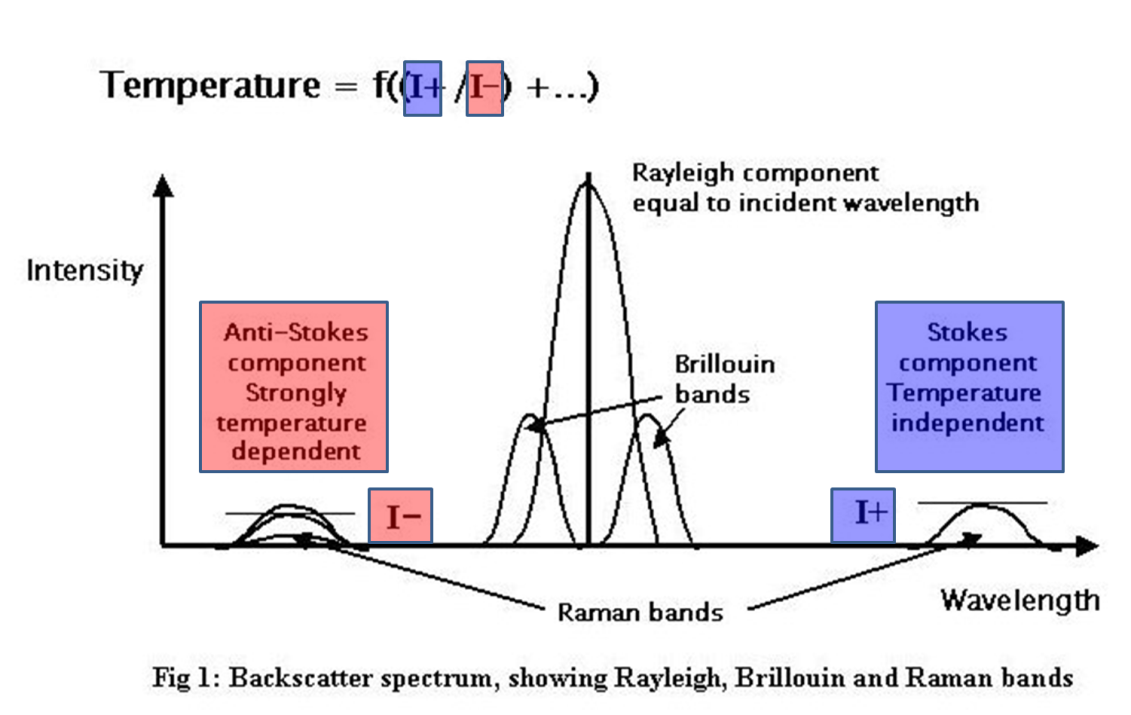16.1 Principles
| Topic Version | 1 | Published | 12/09/2016 | |
| For Standard | PRODML v2.0 | |||
When light is transmitted along an optic fiber, transmitted light collides with atoms in the lattice structure of the fiber and causes them to emit bursts of light at frequencies slightly different from the transmitted radiation, which propagate back along the fiber and can be detected at its end. This is known as backscattering; this is shown in Figure 16.1-1 .

Optic fiber thermometry depends upon the phenomenon that the frequency shifts occur to bands both less than and greater than the transmitted frequency. Furthermore, in the case of the Raman shifted bands the intensity of the lower frequency band is only weakly dependent on temperature, while the intensity of the higher frequency band is strongly dependent upon temperature (Anti-stokes and Stokes bands). See Figure 16.1-2 . Less commonly, the Brillouin bands are used.

The ratio of these intensities is related to the temperature of the optic fiber at the site where the backscattering occurs: i.e., all along the fiber. These intensities are averaged at regular Sampling Intervals. See Figure 16.1-3 . The intensities of backscatter of individual pulses are very weak, necessitating statistical stacking of thousands of backscattered light pulses.
